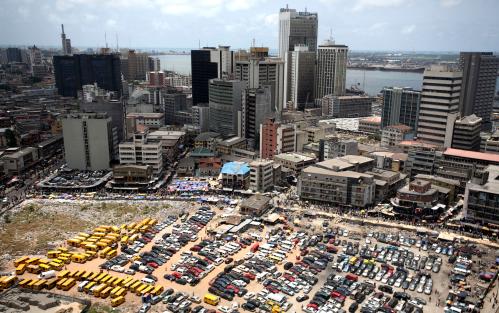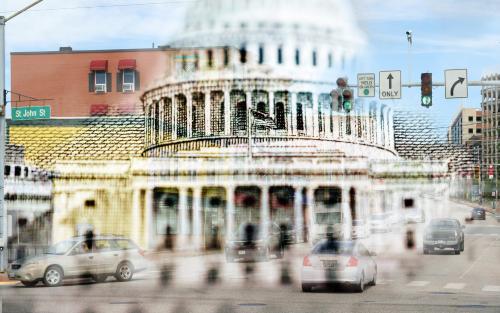In my last post I argued that our canonical models of economic growth don’t help us think about the important role that cities have to play in that process. In this post, I’ll introduce a model that I find extremely useful for making sense of the growth experience of developing countries and apply it to cities. The model, developed at the Harvard Center for International Development (CID), compares economic production to playing the board game Scrabble.
For those who haven’t played Scrabble recently, here’s a refresher. Players collect a number of individual tiles, each of which carries one letter of the alphabet. Players then combine their letters in order to spell words. The value of the words is determined by the sum of the value of each letter, with rarer letters (e.g. Q, X, Z) having a higher value than common letters (e.g. A, E, S, T). Players then compete to produce the most valuable words out of the letters available to them.
In an economy, firms endeavor to make products similar to how Scrabble players make words. To make a product, firms must bring together a variety of very different and very specific inputs and activities. Each of these inputs can be thought of as one capability needed for production, just as a letter in Scrabble represents one capability needed to make a word possible. The table below summarizes some economic phenomena consistent with the metaphor.
| Scrabble | Economic Activity |
| The more letters available, the more words players are able to spell. | Economies tend to diversify, rather than specialize, as the number of available capabilities grows. |
| The rarer the letters and the longer the word, the more valuable it is. | Economies that are able to utilize rare capabilities or combine many capabilities to make complex products tend to be richer and/or grow more quickly. |
| Which words a player can spell in the future is determined by the letters currently available. The value of adding any particular letter is determined by the set of existing letters. | Economies tend to find new products to produce that leverage their existing capabilities. The new industries that are most likely for an economy to discover are influenced by the industries currently existing there. |
Under this model, there are two paths to industrial growth. The first path occurs when an industry with potential is new to an area and some necessary capabilities are not available locally. An entrepreneur must figure out how to create the missing letters and coordinate them with locally available letters to spell a new word. Once this problem is solved, industries can grow via the second path: by simply replicating and scaling up existing capabilities. The emergence of Ethiopia’s flower industry in the early 2000s illustrates both the struggle to coordinate the capabilities needed for a new industry and the subsequent scaling and replicating once the flower industry became profitable.
Cities, in other words, are where the economy plays Scrabble.
Developing countries can grow by bringing in capabilities from around the world, whereas developed countries generally have to innovate new capabilities to grow. To produce the iPhone, Apple built on the capabilities they developed from the iPod, incorporated new letters like mobile operating systems, crack resistant screens, and so on. Once the smartphone word was established, other firms replicated the letters and smartphones scaled up rapidly.
While the implications of this approach have been explored mostly at the national level, I have been surprised by the usefulness of the Scrabble model for considering the economic role of cities. In order to be productive, firms need access to a set of Scrabble letters that are embedded in the diverse skills and abilities their employees bring to work every day. Another set of Scrabble letters come not from individual employees, but from other firms. Many industries need complementary industries nearby in order to thrive. Consider a relatively complex economic activity like advertising in New York City; it thrives there because of the city’s ecosystem of television, theatre, artists, models, and actors, among others. Furthermore, New York City provides for dense housing and transportation, which are catalysts that allow capabilities to come together.
In addition to providing environments in which complex words can be spelled, cities also provide conditions that facilitate innovation. Innovation is not only the result of inventing new letters, but often comes from clever recombinations of existing letters. Consider ride-hailing apps like Uber. The innovation was largely a recombination of drivers with other existing capabilities like smartphones, GPS, mobile internet, online transactions, etc. As a formal version of the Scrabble model suggests, larger cities provide more diversity in the available letters and thus more opportunities for novel combinations–which helps explain why innovation output accelerates with city size.
Cities, in other words, are where the economy plays Scrabble. And that’s why attention to the economic role that cities play is critical for advancing national and global growth.





Commentary
Cities: Where the economy plays scrabble
July 6, 2017